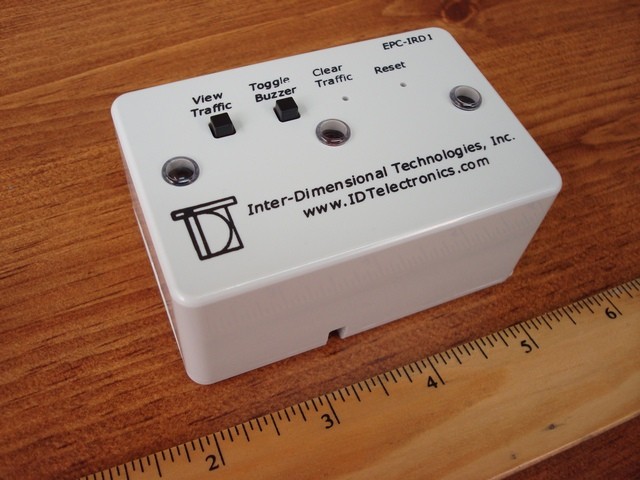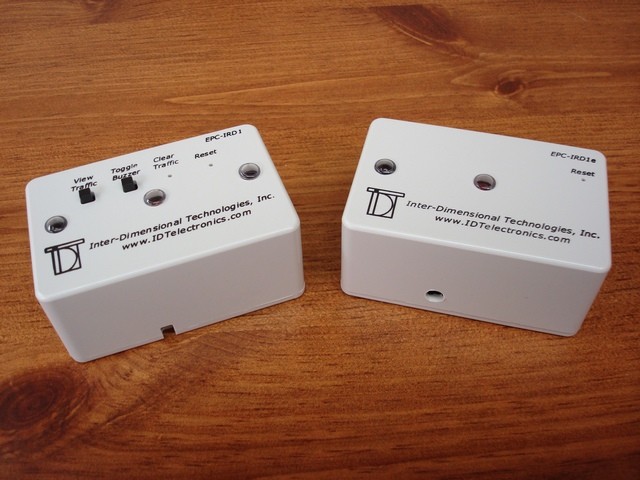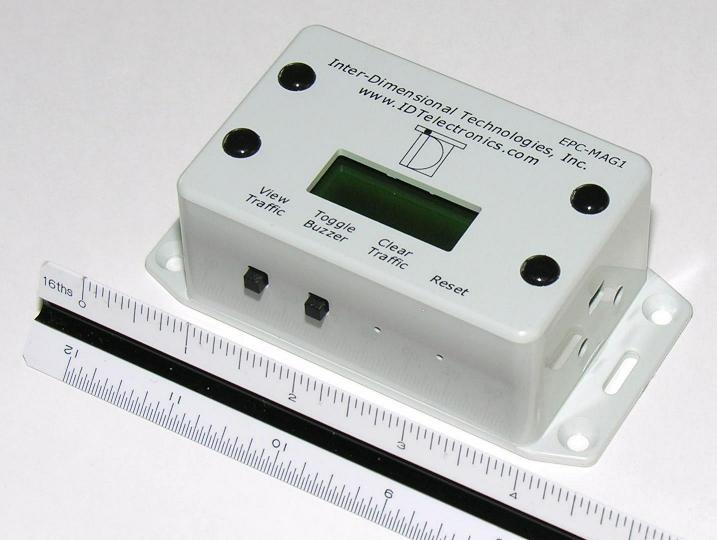

Customer Counters for Smaller Retailers
Being able to count customer foot traffic with a customer counter is just as important to smaller retailers as it is to larger retailers. However, many times, smaller retailers simply do not have the budget that larger retailers have. Smaller retailers also do not need all the bells and whistles associated with expensive and complex customer counter systems. We have a wide range of people counters that are very cost-effective.
We typically recommend either the EPC-MAG1 Electronic Customer Counter or the EPC-IRD1 Electronic Customer Counter to smaller retail shops and stores. That’s because they give a lot of “bang for the buck” and have some features that competitors’ customer counters do not have for this price range.
The EPC-MAG1 and EPC-IRD1 are very similar, with the exception of one important feature concerning how the systems count groups of people. First, let’s discuss the similarities of the two electronic customer counter systems.
What are some of the similarities between the EPC-MAG1 and EPC-IRD1 Electronic Customer Counter Systems?
Some of the similarities with the EPC-MAG1 and EPC-IRD1:
• Keep one single running traffic total
• Do not transmit to a PC or computer network
• Can be set to count individuals or groups
• Has a buzzer that emits a tone when there is activity, but can be disabled
What is the primary difference between the EPC-MAG1 and EPC-IRD1 Electronic Customer Counter Systems?
The primary difference between the two customer counting systems is that the EPC-IRD1 system uses an infrared beam to sense the motion of people and the EPC-MAG1 system uses a magnetic sensor to sense when a door physically opens.
EPC-IRD1:
Since the EPC-IRD1 Electronic Customer Counter uses an infrared beam, it can be set to increment the count by a factor of one for each person in a group. This is useful if you wish to count each person instead of buying parties.
Alternatively, the EPC-IRD1 can be set to increment the count by a factor of one when a group enters. This is useful if you wish to count buying parties and not individuals. An example of a “buying party” or “buying group” would be a husband and wife, or an entire family.
EPC-MAG1:
The EPC-MAG1 Electronic Customer Counter uses a magnetic sensor to sense when a door physically open. Since the EPC-MAG1 counts “door swings,” this means it inherently counts buying parties. This is because people in a group, such as friends or family, will usually hold the door open for each other when entering. Since the EPC-MAG1 counts door swings, this means that an entire group entering on one door swing is counted as one group.
Please note that your entrance must have a physical door(s) and it must never be propped open in order for the EPC-MAG1 to operate properly. The EPC-MAG1 can be used on doors that swing open or slide open.
Would the EPC-IRD1 or the EPC-MAG1 best suit your needs?
In light of the difference that we explained immediately above, if you think you will only want to count buying parties, then the EPC-MAG1 should be considered your best choice, since it is less expensive than the EPC-IRD1 Electronic Customer Counter.
If you wish to count every person that enters, or if you’re are not yet sure if you want to count each person or groups, then the EPC-IRD1 system would best suit your needs. The EPC-IRD1 would best suit your needs because it has the ability to count individuals or groups simply by adjusting a menu option.
What if a retailer wants hourly customer counts?
Although the EPC-IRD1 is the most popular electronic customer counter for our smaller retail customer, some small retailers wish to be able to accumulate hourly traffic counts, transmit the data to a PC or be able to take the manual process of reading and resetting the traffic count out of the hands of an employee. In these situations, we would recommend our RTC-P3 Electronic Customer Counter. It can transmit to a PC and it saves the traffic data in the 24 hourly increments. Since it can transmit to a PC, it can also automate the process of recording the traffic totals in the PC. This means that no one can accidentally transpose a number, since the traffic total won’t be manually read and recorded, as it would with the EPC-IRD1 system.



